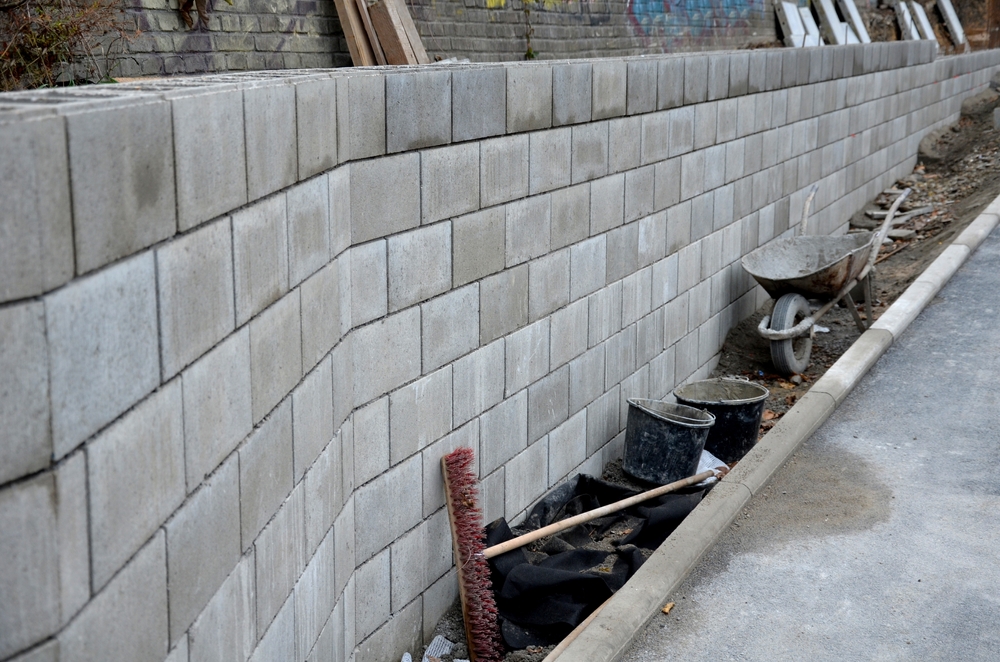
Why Are Soil Anchors In A Retaining Wall Used?
Retaining walls are vital structures used in landscaping, construction, and civil engineering to resist lateral pressure and provide support to soil. These walls prevent soil erosion, control slopes, and create level spaces on sloped terrain. One important aspect of a retaining wall’s structural integrity is the incorporation of soil anchors. These anchors play a crucial role in stabilizing the wall and ensuring its effectiveness. But why are soil anchors used in retaining walls, and how do they contribute to the overall strength and performance of these structures? Understanding the purpose and benefits of soil anchors can help one better appreciate their necessity in maintaining retaining wall stability.
The Role of Soil Anchors in Retaining Walls
Soil anchors, also known as retaining wall anchors, are external stabilizing elements that are driven deep into the ground behind a retaining wall. Their primary function is to help resist the lateral forces acting on the wall, which are typically caused by the pressure of the soil, water, or other external factors. When soil behind the wall becomes saturated with water or when the wall is subjected to excessive weight or external forces, the risk of wall failure increases. In such situations, soil anchors are installed to secure the wall to the earth behind it, distributing the load more evenly and preventing potential collapse or shifting.
Soil anchors are often made from high-strength steel, and they typically consist of a steel rod or bar embedded in a concrete or soil anchor plate that is installed at the base of the wall. These anchors are tensioned to provide resistance against the forces attempting to push the wall forward or cause it to tilt. As a result, they significantly enhance the stability and durability of the retaining wall.
Why Are Soil Anchors Used in Retaining Walls?
The use of soil anchors in retaining walls is primarily driven by the need to maintain the structural integrity of the wall under varying environmental conditions. One of the main reasons for using soil anchors is to combat the forces exerted by the weight and pressure of the soil, water, or other loads. Without these anchors, the wall could experience excessive deflection, rotation, or even collapse, especially in areas with loose or expansive soil, steep slopes, or where water saturation is common. Soil anchors help keep the retaining wall in place, offering additional support that mitigates these risks.
In addition to resisting lateral pressure, soil anchors are also used to limit settlement. When a retaining wall is constructed, the forces acting on the soil behind the wall can cause uneven shifting or settlement over time. This can lead to cracks, gaps, or even failure of the structure. By installing soil anchors, engineers can reduce the likelihood of such issues, ensuring that the wall remains stable and level.
Another reason why soil anchors are used in retaining walls is to enhance their ability to adapt to changing conditions. As weather patterns fluctuate, the soil behind the wall may undergo variations in moisture content, causing it to expand or contract. Soil anchors provide flexibility, allowing the wall to adjust to these shifts without compromising its overall performance. This adaptability is particularly important in regions with frequent rainstorms, droughts, or freezes, as the soil behind the wall may experience frequent cycles of wetting and drying.
How Soil Anchors Improve Retaining Wall Stability
Soil anchors play a direct role in improving retaining wall stability by enhancing its load-bearing capacity. The way they work is by creating an additional connection between the wall and the soil behind it. This helps to distribute the lateral forces more evenly, thus preventing the wall from sliding, tilting, or overturning under pressure. Essentially, soil anchors act as a counteracting force to the pressure exerted on the retaining wall by the soil mass.
The installation of soil anchors also reduces the need for larger, more expensive retaining wall structures. With soil anchors in place, smaller walls can often withstand higher loads without the need for massive amounts of concrete or reinforcement. This not only lowers construction costs but also results in a more sustainable and efficient use of materials. It also allows for the design of retaining walls in tighter spaces or on more difficult terrains where traditional wall systems would be impractical or impossible.
In addition to enhancing the structural strength of the wall itself, soil anchors improve the long-term stability of retaining walls by preventing the movement of the wall over time. As soil anchors are embedded deeply into the earth, they offer a more permanent solution to maintaining the stability of the wall, even in the face of gradual soil shifts or external stresses. This reduces the need for ongoing maintenance or costly repairs and extends the lifespan of the retaining wall.
Benefits of Soil Anchors in Retaining Walls
The benefits of soil anchors in retaining walls extend beyond merely improving the wall’s structural stability. One of the key advantages is that they allow for a more flexible and cost-effective design. Retaining walls with soil anchors often require fewer materials, reducing the overall cost of the project. They also minimize the need for extensive excavation or disruption to the surrounding environment. This can be particularly beneficial in areas where the soil is unstable or where there is limited access to heavy construction equipment.
Another significant benefit is that soil anchors can be used in a wide variety of applications. Whether it’s for residential landscaping, highway construction, or large-scale civil engineering projects, soil anchors can be tailored to suit the specific needs of the project. They can be installed in almost any type of soil, from clay to sand, and can withstand significant pressure from various sources, including water, wind, and seismic activity. This makes them versatile and reliable in ensuring the long-term performance of retaining walls in diverse conditions.
In addition, soil anchors provide a solution to the challenges of working in environmentally sensitive areas. Since they are installed beneath the ground, they have minimal visual impact, making them an ideal choice for projects where aesthetics are important. For example, in agricultural or recreational areas, where retaining walls are built to control erosion or manage slopes, soil anchors allow the wall to blend seamlessly into the natural landscape without obstructing views or creating an eyesore.
Soil Anchor Installation for Retaining Walls
The installation of soil anchors for retaining walls requires careful planning and expertise to ensure the structure’s effectiveness and safety. The process generally involves drilling holes into the ground behind the wall, through which the soil anchors are placed. The anchors are then tensioned to the appropriate level to provide the required resistance against the lateral forces acting on the wall. The anchor plates, typically made from steel or reinforced concrete, are installed at strategic locations to maximize their impact.
Before installation, engineers perform a thorough analysis of the soil conditions, including factors such as moisture content, soil compaction, and stability. Based on this assessment, the number and placement of anchors are determined. The anchors are typically spaced in such a way that they can provide uniform support across the entire length of the retaining wall.
Once the anchors are in place, the tensioning process begins. The tension applied to each anchor is critical to ensuring the wall’s stability, as it needs to be sufficient to resist the forces that could cause movement. This process requires precise measurements and adjustments to ensure that the retaining wall will remain in place for the long term.
In some cases, additional layers of reinforcement may be added, such as geogrid or mesh, to provide extra support and enhance the overall strength of the wall. After installation, the wall can be completed with the desired finish, whether it’s landscaping, stone, or concrete, depending on the aesthetic requirements of the project.
The installation of soil anchors is generally quicker and more efficient compared to other stabilization methods, such as traditional concrete footings or deep foundations. This reduces the time and cost involved in construction, making it a highly attractive option for many retaining wall projects.
Conclusion
Soil anchors are a vital component of retaining wall construction, offering a range of benefits that enhance the overall stability and longevity of the wall. They are instrumental in preventing wall failure caused by lateral forces, limiting soil movement, and reducing the need for heavy, expensive materials. Through careful design and installation, soil anchors provide a reliable solution for maintaining the stability of retaining walls in various environments and conditions, ensuring that these structures remain functional and secure for years to come.
Need Engineers and Designers in Hudson, CO?
Since 2006, High Plains Engineering & Consulting, LLC has been a civil and structural engineering company in Fort Lupton and the surrounding areas. We provide sensible solutions to geotechnical, structural, environmental, and civil engineering challenges. Our office provides practical expertise backed by diverse design resources to get the job done cost-effectively and efficiently with sustainability in mind. We offer various services for commercial, residential, and agricultural properties like soil testing, percolation testing, and foundation and septic design for new construction. Once that is taken care of we also offer services for floor framing, garage plans, house plans, site plans, and inspection services. Call us today for an appointment!
Categorised in: Soil Anchors

 HPEC is an active member of CAGE
HPEC is an active member of CAGE